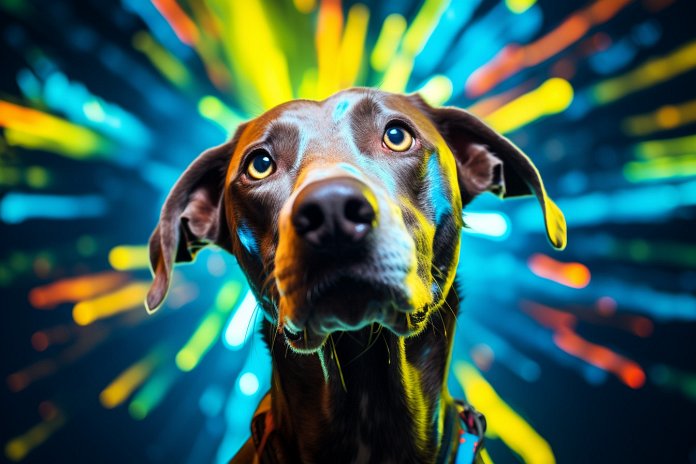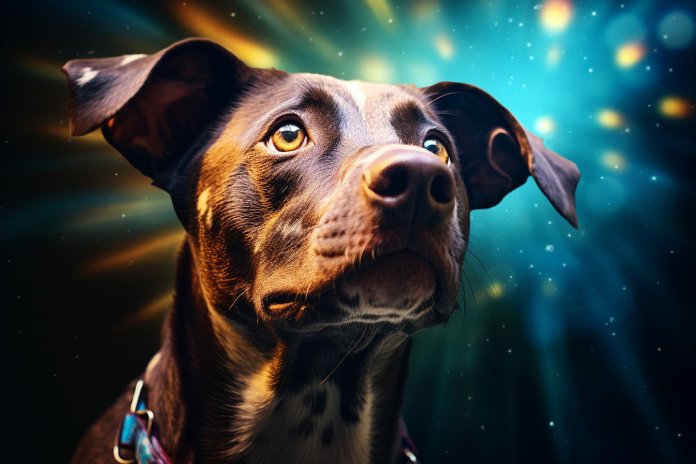
Dogs have good night vision because of a membrane in their eyes called the tapetum lucidum. This membrane allows light to come through and then reflects it back, giving the appearance of shining eyes. Dogs can see flashlights and are often stunned by them due to the reflected light. They can be trained to work in different lighting conditions and enjoy night hunting with flashlights.
Signs Your Dog Can See Flashlights
When a flashlight is shone on a dog, the obvious sign is the reflected color of their eyes. The tapetum lucidum causes the light to change color and give a glow-in-the-dark effect. Dogs can see well at night, and when a flashlight is used to try to pick them out, it is the reflected light that is seen. This light passes through the tapetum lucidum and appears fluorescent due to fluorescence phenomena.
Body Language
Signs that your dog can see a flashlight include staring, being alert, tail up, and ears up. Other signs may include anxiously chasing light spots and looking directly at the flashlight.
History of Dogs Seeing Flashlights
Dogs have adapted to seeing in dim light, as their ancestors were more active at dusk and dawn. Their eyes have larger pupils and a bigger cornea to let in extra light. When dogs see a flashlight, they often appear stunned or mesmerized due to the increased light entering and reflecting out of their eyes. Some dogs are trained to hunt rats using flashlights in cities like New York.
The Science of Dogs Seeing Flashlights
There are several differences between a dog’s eye and a human eye structure. Dogs have more neural photoreceptors called rods, which help in low light conditions. Dogs also have a larger field of vision, seeing 250 degrees compared to humans’ 190 degrees. The reflective light in their eyes causes a slightly blurred vision.
Training Dogs with Flashlights
Flashlights and lasers are not recommended for training as they can lead to obsessive behavior in dogs. Dogs can become obsessed with chasing the light source, which is an abnormal and addictive behavior. Flashing lights can stimulate a dog’s prey drive and lead to obsessive chasing of light and shadows. However, some dogs, like Coon Hounds, are comfortable with flashlights and are trained to hunt at night using them. Flashlights can also be used for tracking and tracing, hunting, and searching, but primarily for the owner rather than the dog.
“The tapetum lucidum: Unleashing the nocturnal glow in your dog’s eyes”

Tips & Things to Know
1️⃣ Dogs have a unique eye structure that allows them to see well in dim light. They have a tissue membrane called the tapetum lucidum that reflects light, giving their eyes a glow-in-the-dark effect. This makes them more sensitive to light than humans.
2️⃣ When a dog sees a flashlight, their eyes will reflect the light, creating a fluorescent glow. This can be observed as a color change in their eyes when a light is shone on them. Dogs may also exhibit body language cues such as staring, being alert, tail up, and ears up when they see a flashlight.
3️⃣ While dogs can be trained to work in different lighting conditions, it is important to avoid using flashlights or lasers as a form of training. Dogs can become obsessed with chasing the light source, leading to abnormal and addictive behavior. Flashlights are more beneficial for the dog’s owner in activities like tracking, hunting, and searching, rather than the dog themselves.
Frequently Asked Questions, Answered ✅
1. How do dogs reflect light when a flashlight is shone in their eyes?
– Dogs have a tissue membrane called the tapetum lucidum in front of their retina that allows light to pass through and then reflects it back, resulting in a glowing effect.
2. Why are dogs more sensitive to light than humans?
– The tapetum lucidum in dogs reflects 130 times more light than the human eye, making dogs five times more sensitive to light.
3. What are some signs that indicate a dog can see a flashlight?
– Staring, being alert, tail up, and ears up are signs that a dog can see a flashlight.
4. How do dogs’ eyes differ from humans’ eyes in terms of structure?
– Dogs have more neural photoreceptors, rods, and cones than humans, allowing them to see better in poor light conditions. Dogs also have a wider field of vision and larger pupils.
5. Why is it not recommended to use flashlights or lasers for training dogs?
– Flashlights and lasers can lead to obsessive behavior in dogs, as they can become fixated on chasing the light source. This can result in abnormal, addictive behavior and should not be used as an alternative to clicker training.